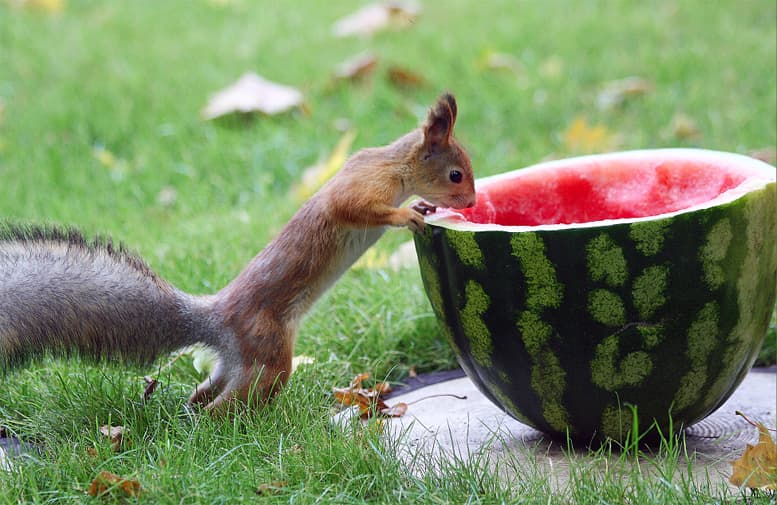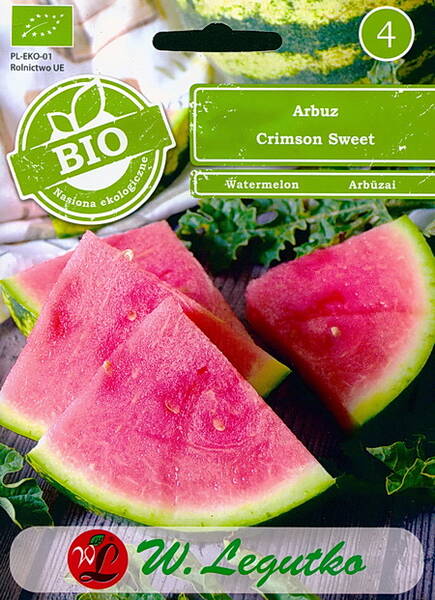The variety was originated by Charles V. Hall of Kansas State University and came about by crossing together the varieties Miles, Peacock and Charleston Gray.
Crimson Sweet Watermelons were first introduced commercially on February 6th, 1963.
Crimson Sweet is a fine watermelon variety and produces a multitude of round, blocky shaped watermelons that average about 4 kg in weight.
The variety is extremely adaptable and can be grown in most areas.
The watermelons are a light green in colour with darker green stripes and possess a very finely textured sweet red flesh with a very high sugar content and small, dark brown seeds.
The variety has a thin, but durable rind and makes an excellent shipper. In fact, with its excellent shipping qualities, round shape, uniform size, smaller seeds, sweet taste and attractive red flesh, the Crimson Sweet is one of the very finest open pollinated watermelons available despite its age.
Resistant to anthracnose and fusarium wilt. Matures in 67-82 days.

Early watermelon. Bot.: Citrullus lanatus L.
* It’s unlikely that there’s a person who would say that they don’t like watermelons...
This giant berry has become a favorite among everyone. During the harvest season, many even use a watermelon diet to cleanse the kidneys and urinary tract, which is truly effective.
But few people know that this fruit has other healing properties. For example, it's rich in iron, which helps with anemia. Its high content of easily digestible sugars makes it beneficial for diabetes. For the treatment of liver and gallbladder diseases, including cirrhosis, cholangitis, atherosclerosis, hypertension, gout, gastritis, constipation, arrhythmia, coronary insufficiency, tonsillitis, obesity, and various intoxications, it is recommended to include 4.5 kg of fresh watermelon pulp in the daily diet.
For general body cleansing, unless contraindicated, a watermelon fast is used, whereby only watermelon and rye bread are consumed for 3-4 days. Intensive urine flow during these days flushes the kidneys and urinary tract, removing sand and small stones.
Watermelon's pulp, as well as its seeds and rind, are not the only part of the plant that has medicinal properties. These can be preserved for future use and used for the same ailments as the pulp, in the form of decoctions and infusions.
For gastritis, pour 0.5 liters of boiling water over 100 grams of dried bark and let it steep until completely cool. This is best done in a thermos. Adults weighing 70-75 kg are recommended to take 100-125 ml of the infusion 4-6 times a day. For children, reduce the dosage proportionally to the child's weight.
For gallstones and to cleanse the bile ducts, pour 150-170 g of dried bark into a liter of boiling water, place over low heat, and simmer for 25-30 minutes. Take 200 ml of the decoction before meals 3-5 times daily.
Consumption of watermelon pulp in large quantities is contraindicated in cases of renal failure, exacerbation of gastric ulcers, and duodenal ulcers.












